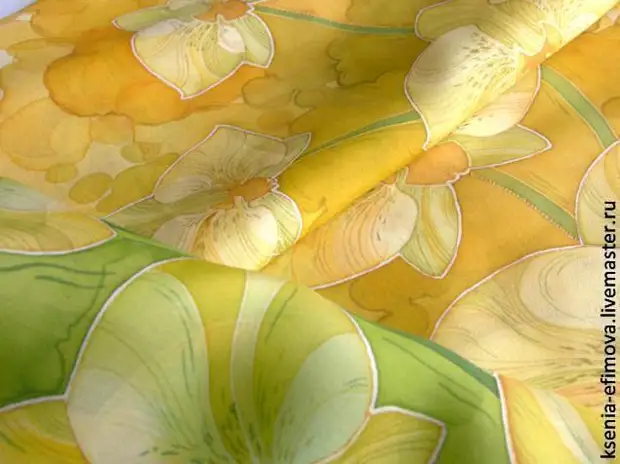
Squeeze a silk scarf in a cold batik technique.
We need:
a piece of silk 35x155 cm (before work Silk must be wrapped in hot water without the use of soap);
Paints and contours for painting on Silka (I work with paints of Marabu and Javana);
Transparent redundant composition based on rubber glue and gasoline (Gamma company, for example)
brushes (synthetics №2, 6, 9, protein №10 or any soft wide brush);
Rama on screws or subframe 35x155 cm;
buttons;
Bank with water and a palette plate;
You will also need "Cardboard" - a sketch of a genuine value.
1. First of all stretch the fabric. First we stretch along the corners, then in the middle of each side, then we can slightly wet the tissue and stretch it wet. First by narrow sides, after long. The fabric must be stretched very tight, so that with the mouth of Silk did not resist and did not touch the table.
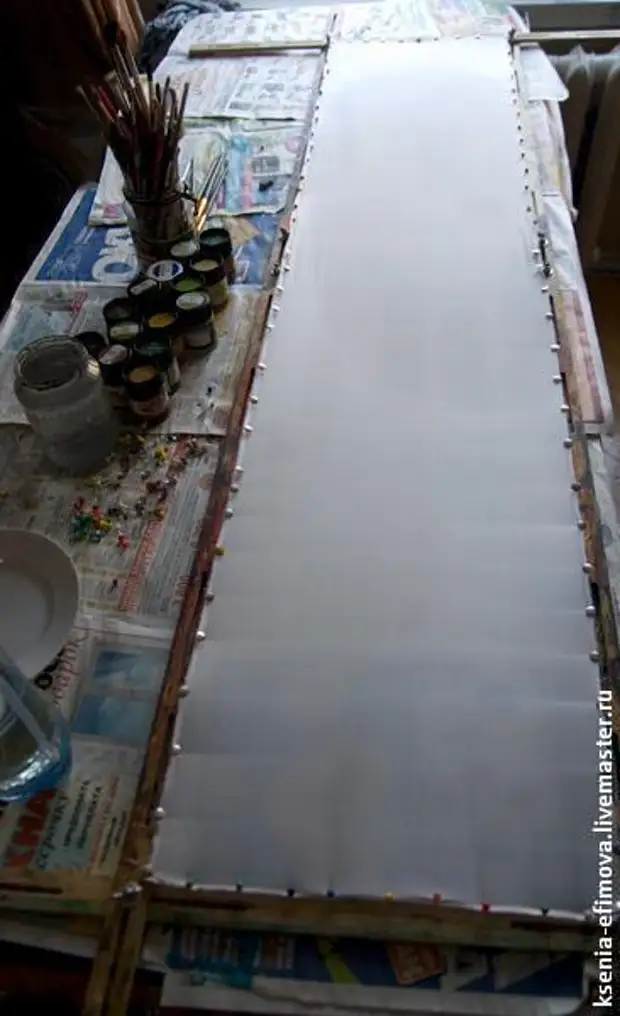
2. Place the drawing under the fabric. In this case, Silk is not very dense and the drawing is visible quite well.
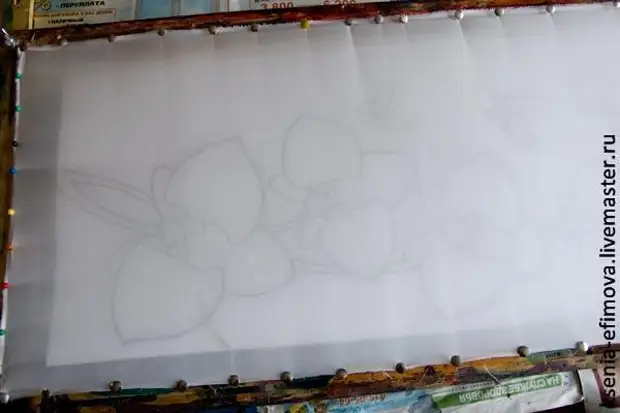
3. Now we need to circle a drawing with a reserve. We recruit the reserve in the tube. This is done by the fringe. The sprintscoat is compressed, assigned to the wide end of the tube and the reserve is suused inside. It will be enough to fill the tube to half the tank.

4. Obligate the drawing. First, we supply only flowers and butterflies. The tube is kept so that the nose is perpendicular to the tissue. We carry out exactly, not in a hurry, but without lingering for a long time in one place. The line must be smooth, without breaking and non-accurate drops.
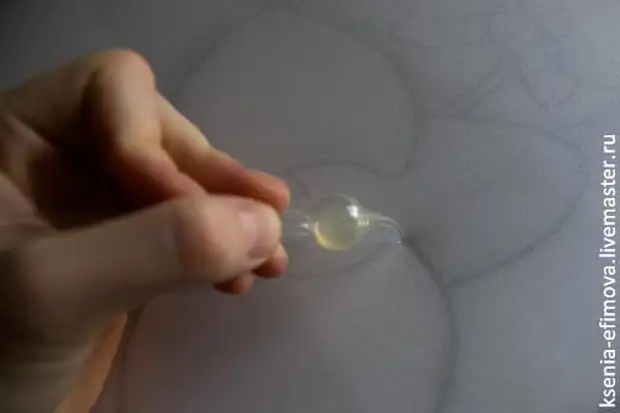
5. The line that limits the plane must be closed so that the paint does not flow into the adjacent area.
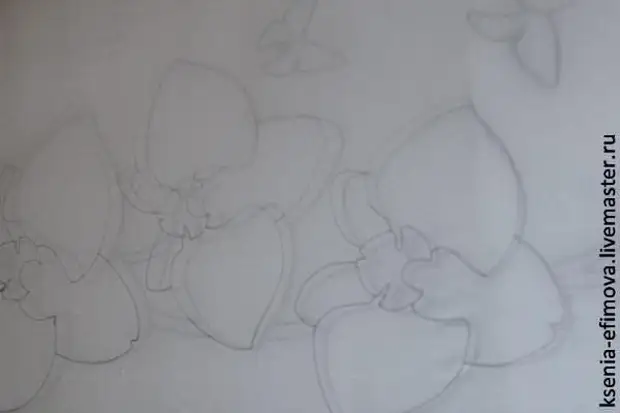
6. After the drawing circled, you can look at the lumen, there is no lines. We give the reserve to dry about 40 minutes.
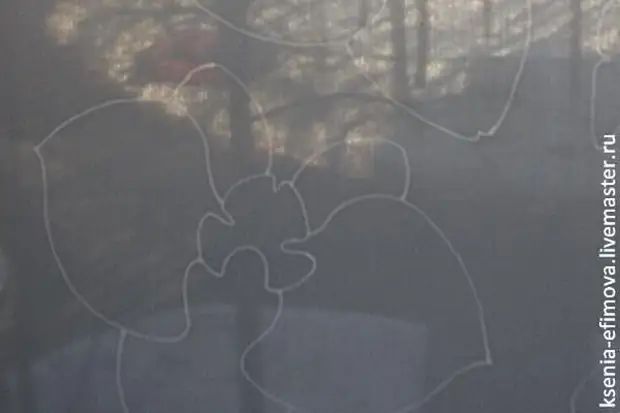
7. We start painting the background. To do this, wet it with clean water with a wide brush.
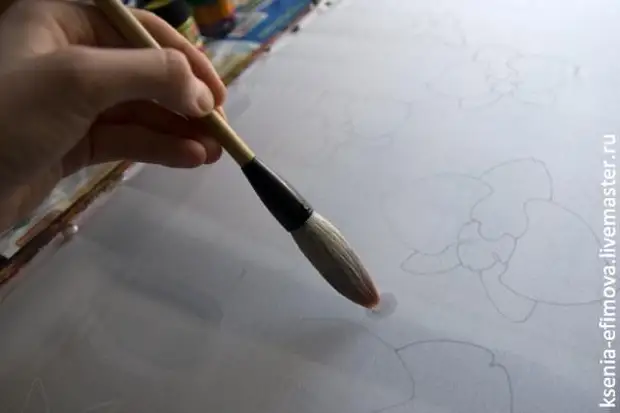
8. At the same time, we immediately see where the line will miss the paint. Such places must be dried and carry out the line at the site of the gap.
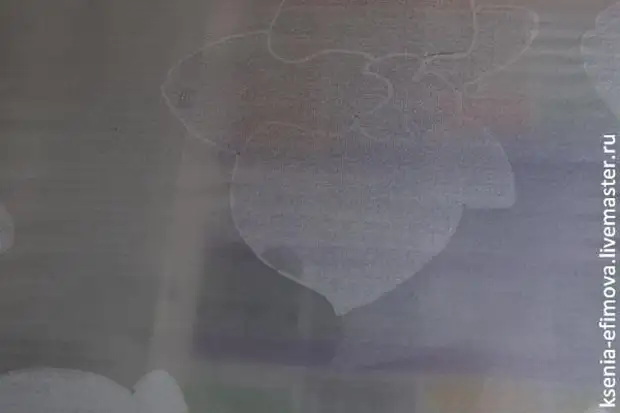
9. On the palette, the background color is stuffed. To begin with, we paint the background not in full force, but only slightly stain with the cloth.
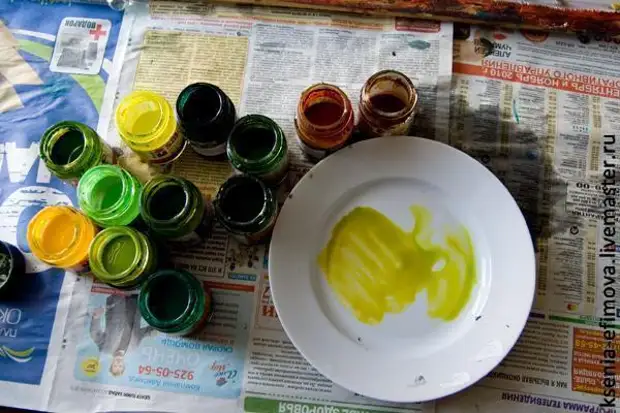
10. The background does not necessarily paint in one color. Better, if it is picturesque, with color transitions.
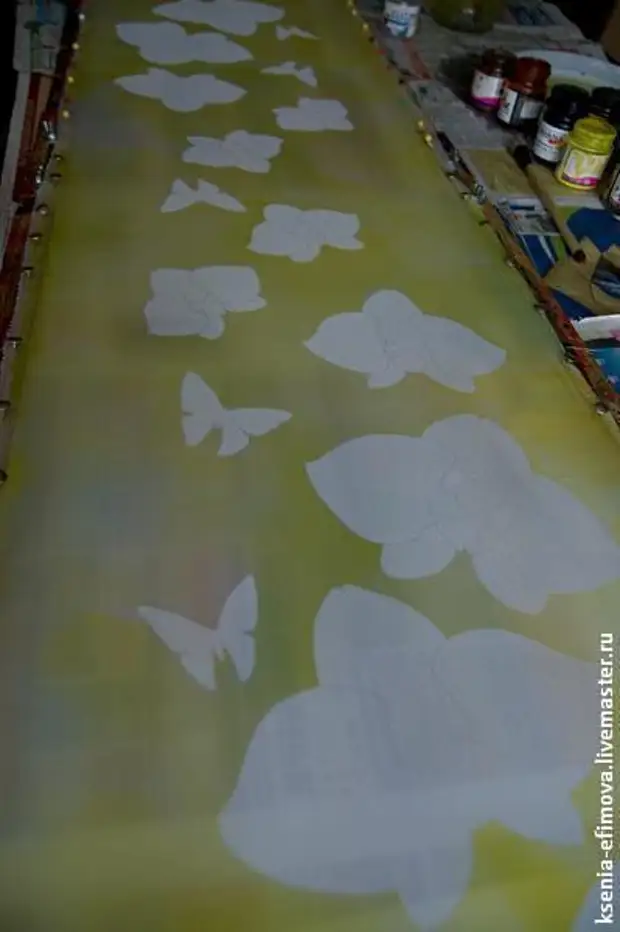
11. Then we paint flowers. On the petals make smooth transitions from light to dark.
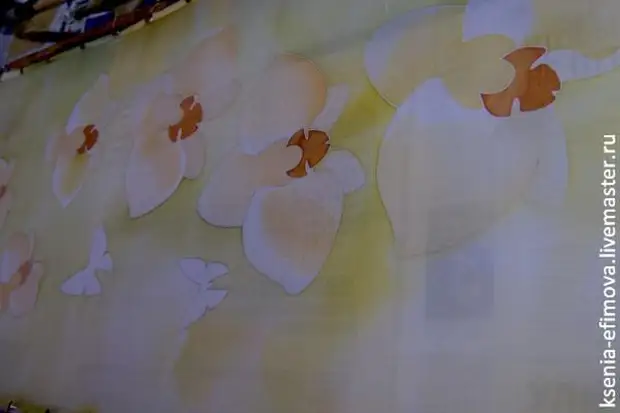
12. When the background and flowers dried, with the help of a tube and reserving composition, we supply stalks and accommodation on colors.
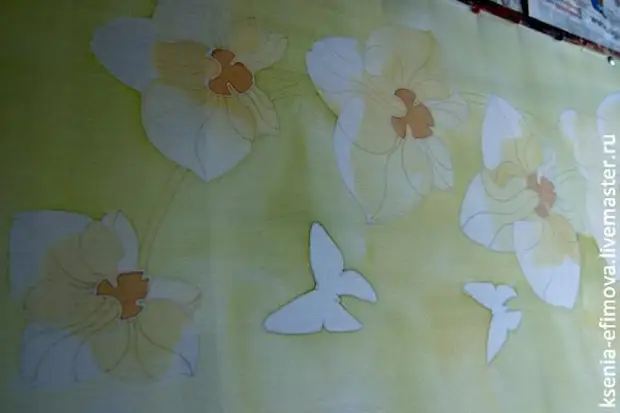
13. Collapse background stains.
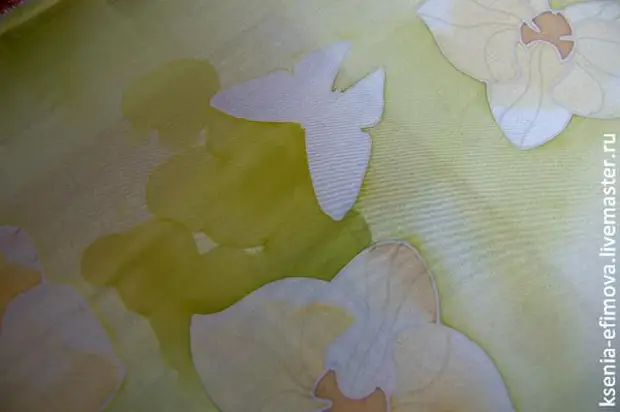
14. In order to get a watercolor effect, we give every spot to dry and then apply a neighboring stain.
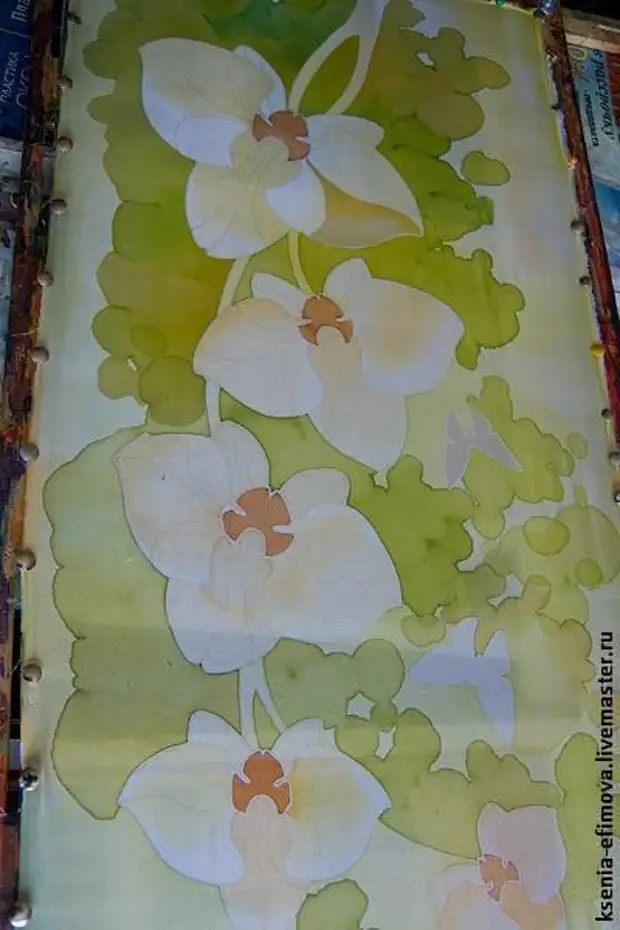
15. We paint stalks ...
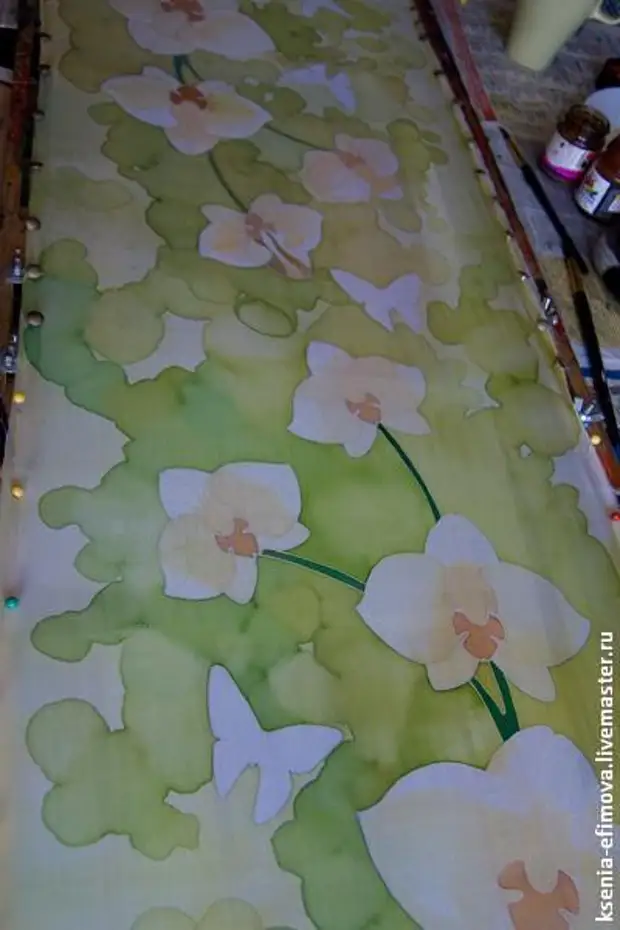
16. ... and petals. You can walk along the background by another layer of smears.
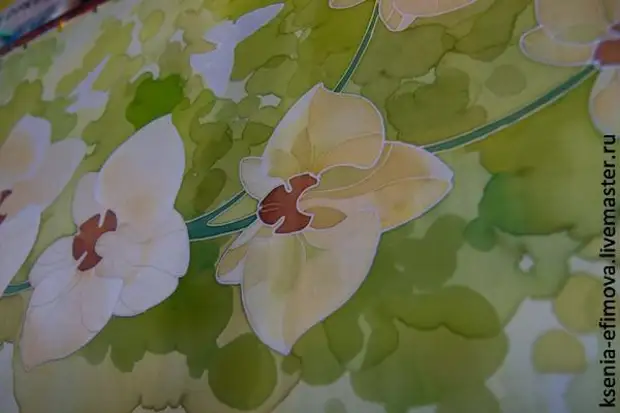
17. With the help of the contour, we draw a streak, we put the points, we specify the details.
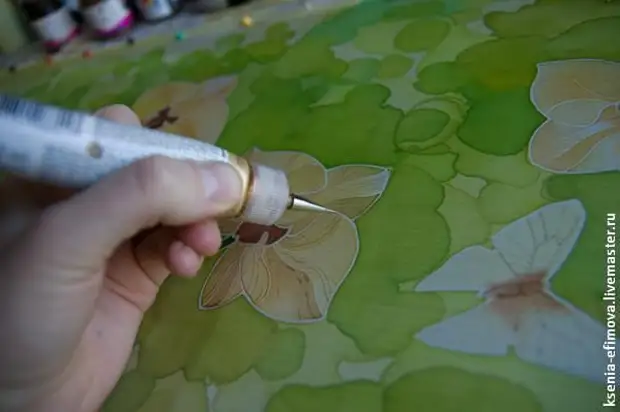
18. The same makes it with a thin brush. The brush should be almost dry.
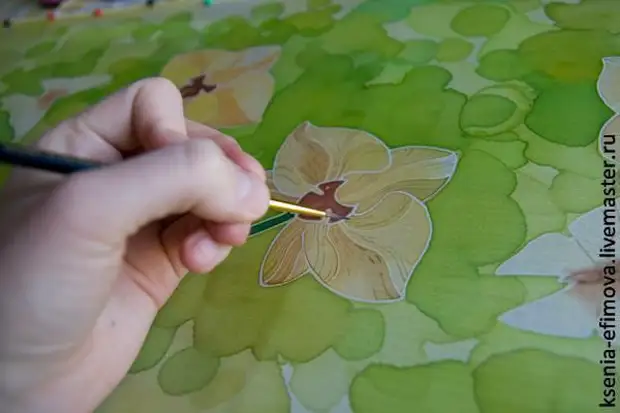
19. We get such flowers. The measure of workout depends only on you: from your taste and fantasy :)
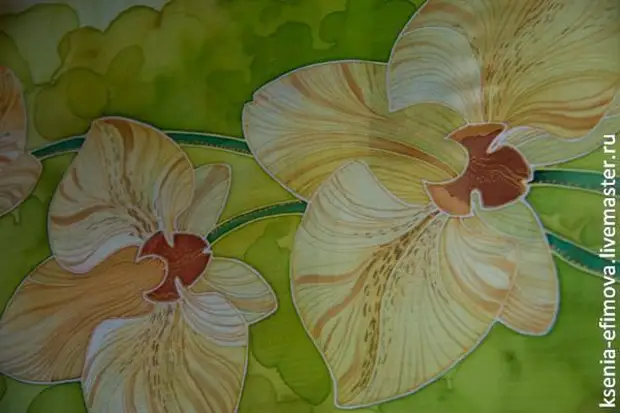
20. Remove the fabric from the frame and stroke for 2-3 minutes each site (the width of the site is equal to the width of the ironing board). After stroking, we leave the fabric about a day. This is enough for paint finally fixed. Next, I usually rinse the fabric in the cleaned gasoline to remove the backup composition, but you can safely skip this stage and simply to strike the fabric in a soft detergent.
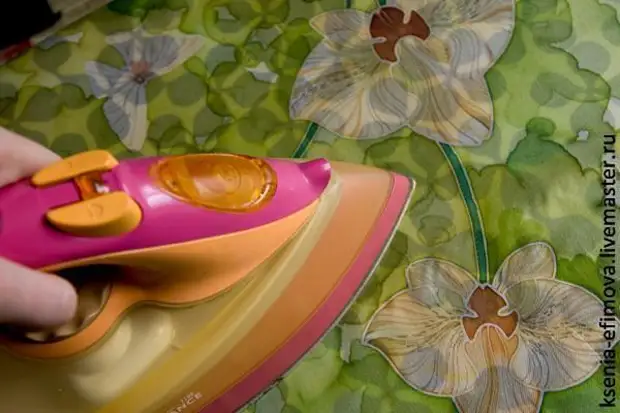
21. Disseminating the fabric on the newspaper or on another absorbent surface, you can clarify the details again.
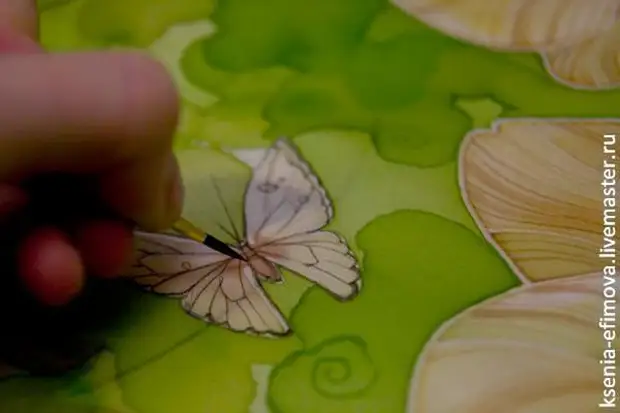
22. We strifted Silk. Best do it manually, because Machine line makes the edge a little rough, while the manual seam saves the softness of Sheocha. Well, now the scarf is ready for a summer walk :)
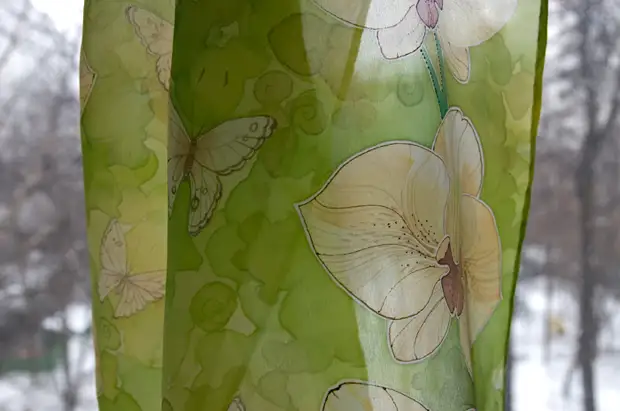
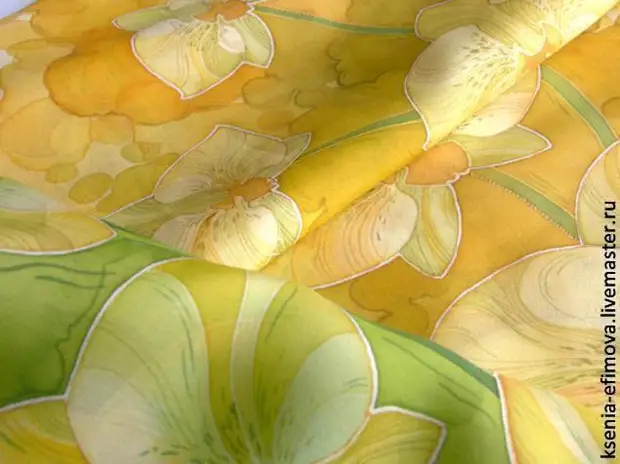
A source
